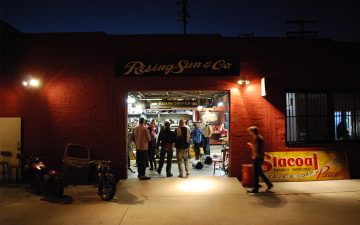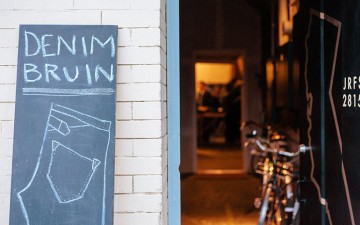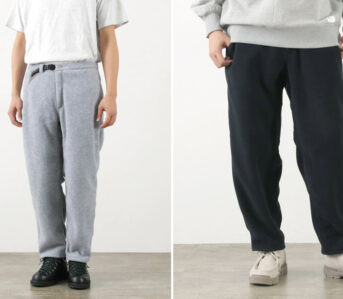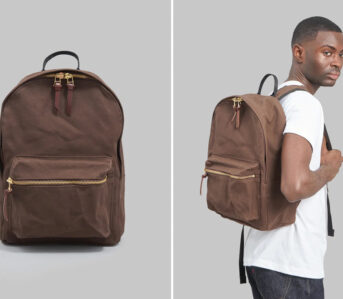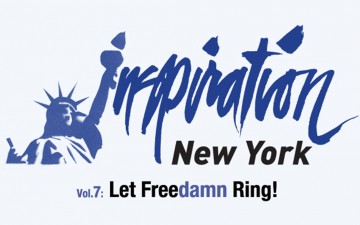In the years I’ve spent working in and around Clothing, I’ve seen massive bolts of fabric and manufacturing floors and uncut leather and working looms and the sample process and pattern-cutting and Very Old Shit in climate controlled rooms and I even watched one brand hand-stitch muslin labels onto the collars of shirts in the parking lot outside a store I worked at.
I’m not easily surprised or transfixed, even if I am easily amused. But I don’t think I’ve really seen cross-sections of Goodyear welted, stacked-sole pieces of footwear, because I don’t think I’ve ever seen anyone cut pieces of footwear like that in half. And definitely not multiple styles, and definitely not at an event like Stitchdown Bootcamp.
If you made a cross-section of a lot of clothing, it would mostly be just some seams and thoughtfully shaped fabric pieces. But footwear is different because footwear is complicated as shit and completely unpredictable. Not watch-complicated, but a sweet symphony of unrelated components nonetheless — leather twisted and molded and hardened and compressed and commanded to the extent that it’s difficult not to marvel at what’s going on there.
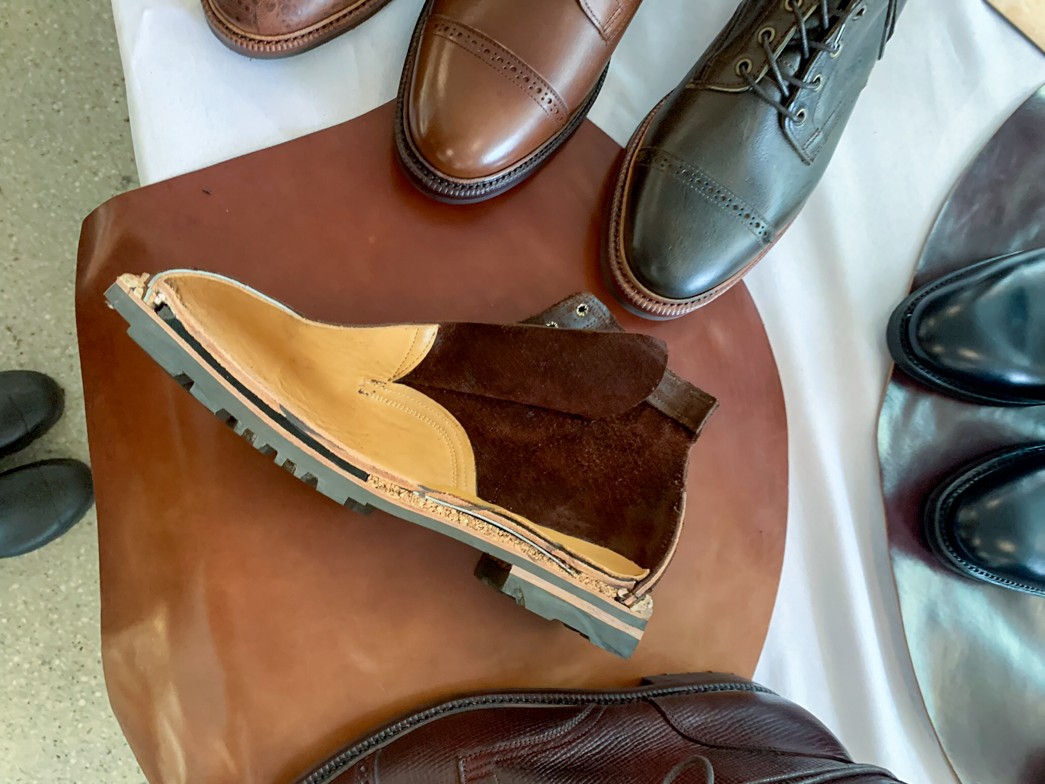
And while I don’t endorse cutting your own shoes in half, I do recommend finding a venue in which you can see it. It’s not life-changing, -affirming or -altering, but it’s cool and sometimes seeing something cool is the best way to spend a gloomy-ass Friday in the fall. Especially if you love leather footwear, the work that goes into the things you love, the people behind that work and the community that supports it.
From what I could gather, most of the attendees at Stitchdown Bootcamp were there because they love leather footwear, particularly handmade leather footwear and preferably the kind that have zero ties to team sports in their lineage. That is to say, this is an event for people that love footwear as a concept and a story as much as they love it for any performance reasons.
I am one of these people, but this is probably an appropriate time to mention that I am not a boot guy. I own a single pair of boots, and they’re duck(ish) boots. That’s it. I don’t even think I’ve worn leather footwear with a vamp higher than a chukka since I was an actual toddler, but it’s admittedly kind of hard to check my work on that calculation. I have written about boots for a decade, however, and I love shoes and I attended the event, so I don’t think I’m patently unqualified to cover a boot camp.
What is Boot Camp?
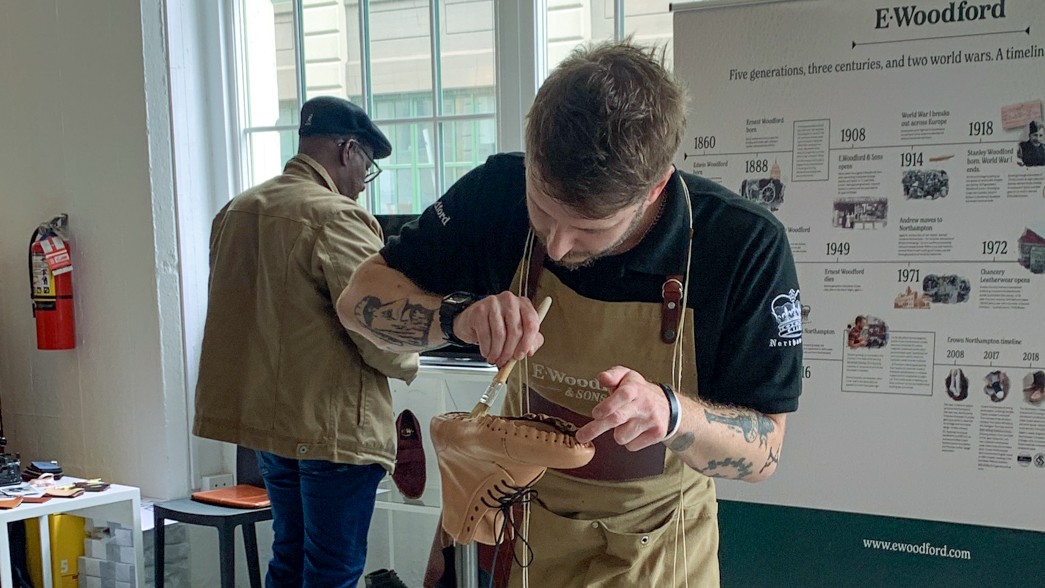
Stitchdown Boot Camp is an event held in Industry City, Brooklyn* that gathers some of the best independent boot-makers (on occasion, loosely applied) and friends under one roof to allow ticketed attendees to interact with brands, purchase things at a better rate than might otherwise be possible and hang out with other like-minded folk. It is not, as the name would suggest, a camp, but it is a fun pun.
(*Industry City is exactly what the name implies, except it’s not really a city. Or not a city at all. It’s a few buildings so large they feel like a city unto themselves, but inside is a series of workshops and studios and stores and outposts of popular restaurants made decidedly less popular by geography, but no residents. Red Hook is a neighborhood, Industry City is a construct.)
Anyways, they had full-on shoemaking expos underway, more fittings than a single mind could possibly wrap itself around, material suppliers, discussions, a drinks situation, a tent for vintage vendors (I bought a Margaret Howell knit t-shirt for $20, am still incredibly pleased) and a whole-ass sample sale populated by vendors like Viberg, Nick’s Handmade Boots, Grant Stone and others.
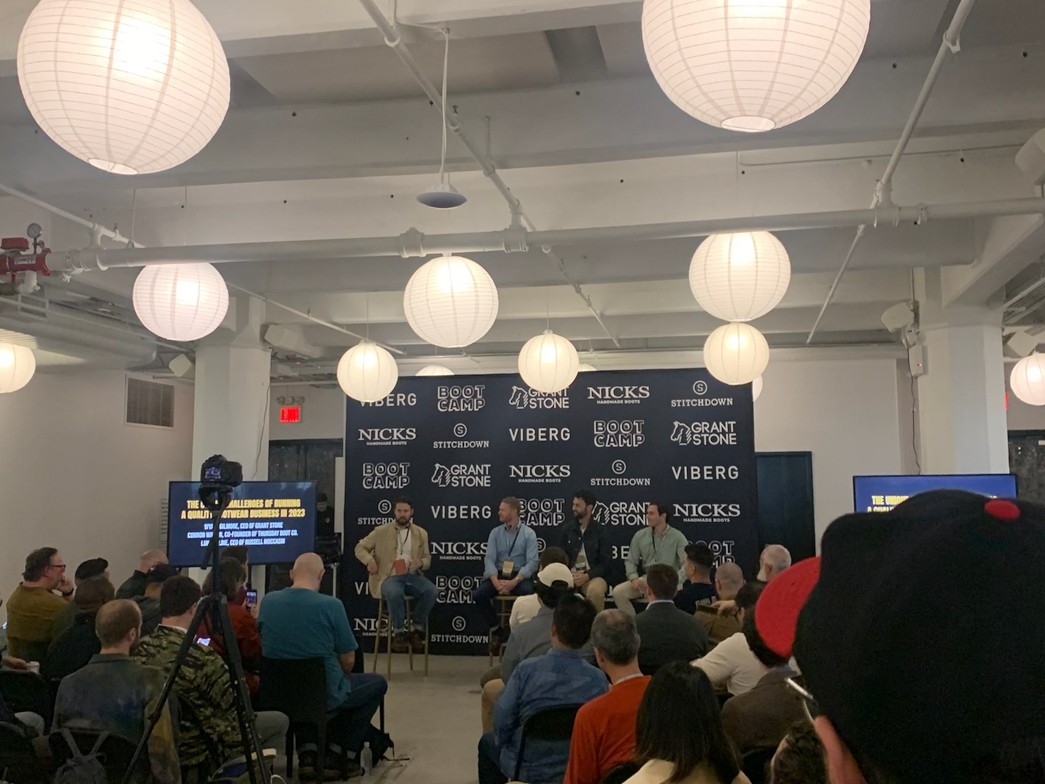
(Actually, a quick thing that happened to me at Stitchdown Boot Camp: I was making my way through that sample sale, which was in a (massive) outdoor courtyard in between buildings at Industry City, but I wasn’t in the market for anything as heavy as footwear because I have a problem and occasionally I can actually acknowledge that problem and—at a maximum—not exacerbate it*, but I also wanted to do my journalistic diligence and see what the sample sale was all about.)
The way they set up the sample sale was Ikea-style, with one-way, lazy river traffic, and I was walking through and mostly feeling grateful that I didn’t want any shoes because there were good shoes and boots and then, on a table directly in front of me, I noticed a single Paraboot Michael, sitting in my size section. There were no other Paraboots anywhere to be found and it would make zero logistical sense as to why even a single pair would be available at this particular sample sale because they were not present at this event in any capacity and basically never go on sale, but the shoe was new and it was my size and it was in my section, sitting solo alongside the rest of the unpaired shoes that were part of the sale. I put the shoe on and it fit, so I sighed a $200+ sigh and mentally withdrew the money from my bank account and proceeded to look around for someone to get me the left foot.
All I found was a confused camp-goer staring at my feet. I looked at him and he looked at my feet and I said something like “What a fucking comeup huh?” To which he replied, “Those are my shoes?” Now, could I have realized that I was wearing the right shoe and the rest of them were left shoes? Sure. That would’ve made sense. But I, good reader, did not notice this. If I could’ve turtled my shit into the shoe that was owned by someone else, I would’ve? I have no idea why this is relevant, but I did this early and that meant that every time I saw this poor guy for the rest of the event he had to be reminded that a stranger gave his shoes a test drive. Maybe it’s relevant to give you all a ceiling on embarrassment levels you can attain at an event like this. Turns out the threshold is pretty close to “Trying on Someone Else’s Shoe Without Them Wanting You To.”)
Who Was There?
In total, there were 18 vendors. Viberg, Nicks Handmade Boots and Grant Stone were the presenting sponsors, while Meermin, Crown Northampton, Caswell, Francis Waplinger, Russell Moccasin Co., Unmarked, Perera Shoemaker, E. Woofard, Famous Horween Leathers, Gallun Leathers, Iron Boots, The TR, Carbone Detroit, Last Society Detroit and the College for the Creative Studies were the others. Some highlights included…
Viberg
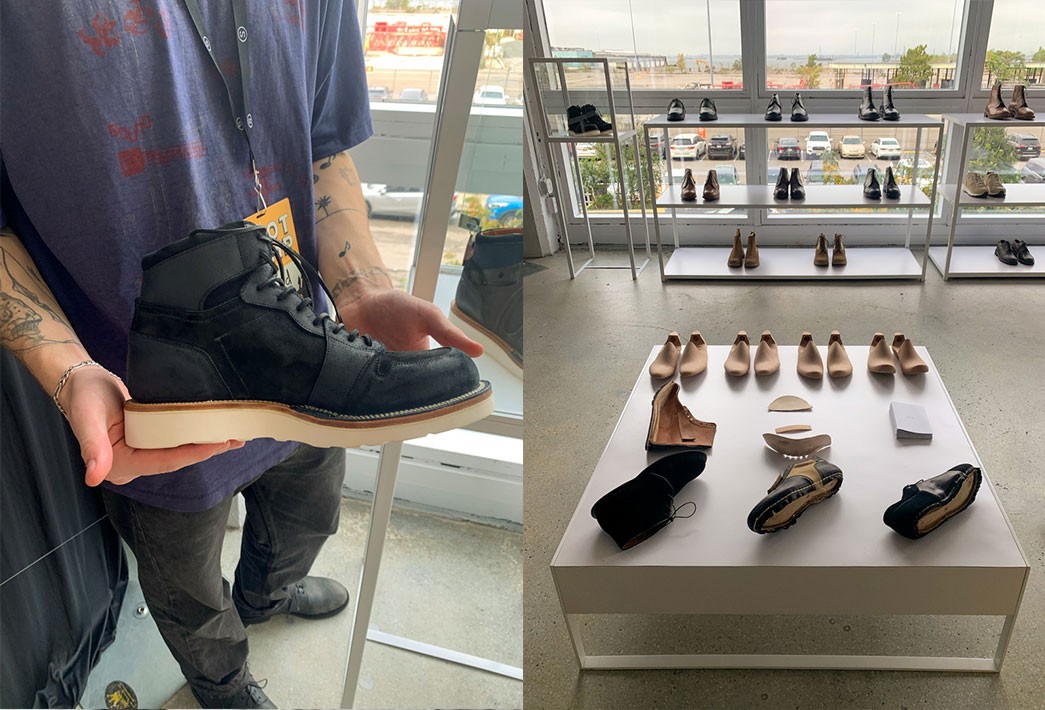
To get the important stuff out of the way early, Viberg is as hard-hitting as ever. Their construction is airtight, the materials are unimpeachable and the oh-yo-that-one to wtf-is-that ratio within the slate is the perfect ratio to stave off any sleepiness.
Alongside some quirky, more GORP-coded boots (they’re good!), pretty much everything you know and love is available — consistency is important — and a whole bunch of those styles also come retrofitted with burly, more tech-forward sole units.
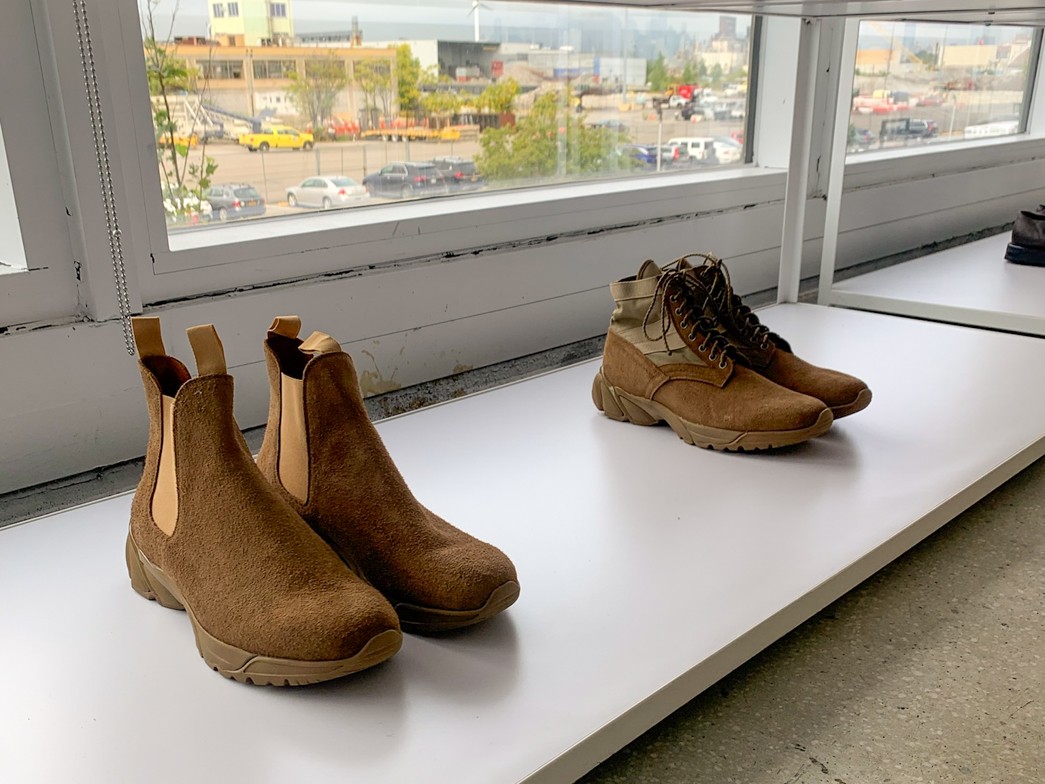
They were (sort of?) playing the role of festival headliner, so Viberg’s booth was prominent, but it was also pretty focused. There were just a couple handfuls of shoes on display, but they doubled down on the installation, which featured a How It’s Made section and a detailed brand history to provide anyone nearby with as much context as required to digest the presence of $2,000 Jordan 1 boots displayed in a showcase in the corner. (The best time to bury a lede is a couple thousand words into a thing, this is canon.)
How much context is required? Probably depends on how interested you are, but the dupes were fucking cool — a boot with basically the same paneling as you’d see on the venerable basketball sneaker, but that paneling is done in a combination of lush black suede and matte black leather — both far beefier than anything you’d find on a sneaker. But if you thought they stopped at the upper, they most certainly did not, because all that is Goodyear welted to a white Vibram Morflex sole instead of the standard low-profile, air-injected unit. Also, no Swoosh, because lawsuits (I assume, I didn’t clarify). Could you buy a pair of 1985 1’s for the same price? A great pair, actually. But these aren’t those, and will not scratch the same itch. If you’re interested, hit em up.
Grant Stone
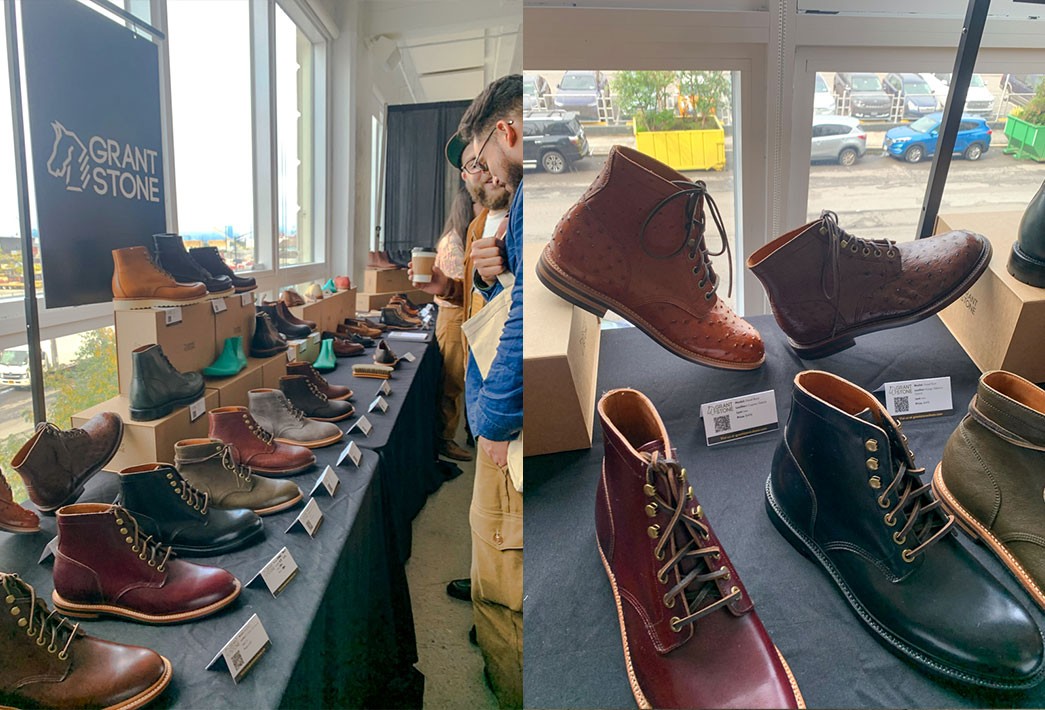
There were a whole bunch of ways I thought about taking this, but anything veering away from center felt a bit disingenuous. That isn’t to say that Grant Stone isn’t worthy of a convoluted comparison to the importance of reliable public transit systems or something like that. In fact, I probably spent more time milling about their booth than any other — due to both the large crowds gathered, which made it a bit hard to get up close and personal with the shoes, and the volume of styles available to look at. And sometimes, Good Shit is energizing, idk. Not in like a go home and draw kind of way or in a rethink my footwear rotation kind of way, but in a playing the hits well can remind you how good The Hits™ are kind of way, and that they’re The Hits™ for a fuckin reason.
And whatever redundancy fatigue that could be attributed to a steadfast devotion to The Hits™ is hard to fathom when the product is as well-made and well-executed as Grant Stone’s is. Also when they have as many regret-inhibiting colorways and leather options as they do. And when all that’s taken into account, the big crowds make sense: if the goal of owning GYW footwear is to love that shit for a lifetime, it’s probably important to minimize the odds of stylistically outgrowing that footwear, which is often something only The Hits™ can defend against. After all, the reason they are hits is because they transcend the context that created them, untethered to any particular moment in time and thus without expiration date or much risk of becoming stale. And again, Grant Stone plays them real well.
Russell Moccasin Co.
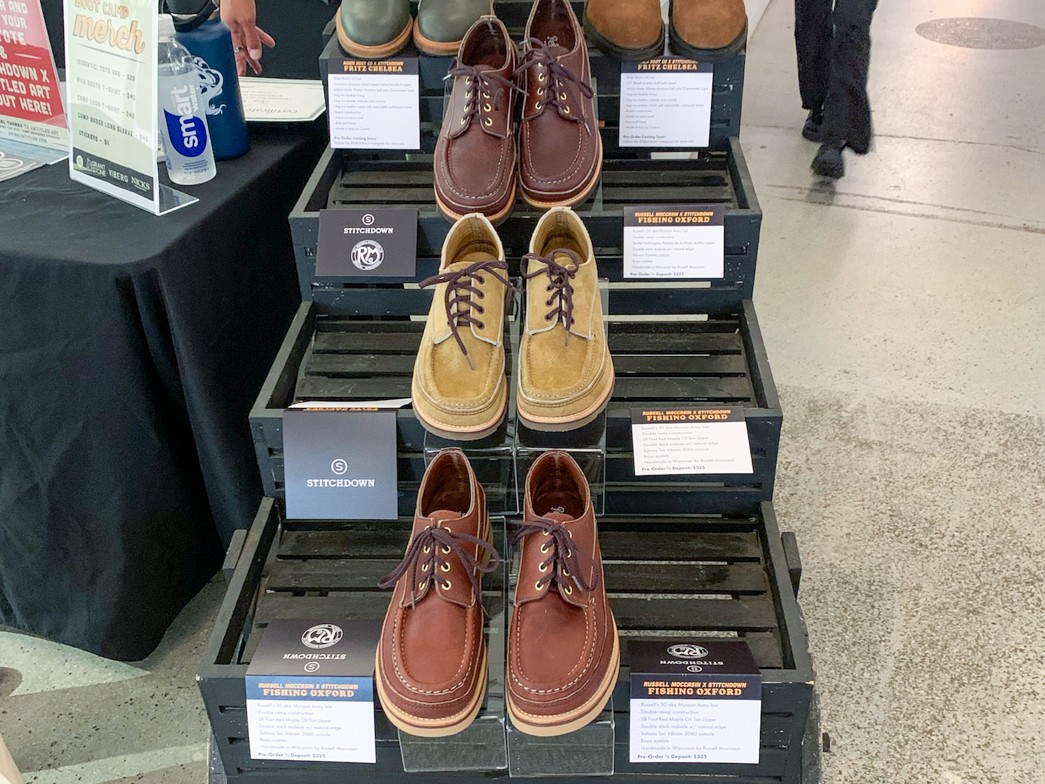
At the Russell Moccasin booth, a Very Enthusiastic Man was waiting to talk to one of the co-owners of the company, who was in conversation with a different Very Enthusiastic Man. VEM #1 waited with the same kind of energy you normally see lined up at a stadium bathroom, but when he got his facetime, I absolutely eavesdropped and heard him tell the (new!) owner of the company that he had exclusively worn Russell footwear for decades, since he was in his 20s, and he never wanted to wear anything else. As it turns out, this meant he had owned five pairs total. I have no idea if this quantity is shockingly low, considering the time frame, or comically high, but VEM #1 managed to completely bypass the checks vs. stripes debate and wear nothing but handmade boots that come from the banks of the Fox River in Wisconsin.
I know zero people with this kind of brand loyalty, so I was impressed. I couldn’t do that shit, my canine attention span would snap me in half if I tried, or take over my body like Idle Hands and guide me toward like seven silhouettes I’ll have to learn to love. Again, I was impressed.
And Russell Moccasin Co. is impressive. They do look like the boots that other companies reference, but they cut zero of the corners that the finance departments at those other companies want to cut — whether that’s leather quality, the handstitching process, the run sizes — which are also the details and choices that make them wear tougher and get better over time, holding up season after season, year after year. Basically, they make the boots that were supposed to be extinct, the kind that people speak wistfully of — like old refrigerators or Pittsburgh steel or something.
And of all the above means that, if you’re hunting for a rugged guide boot, you could probably find something that looks like a pair of Russells and hope that they perform the same way, or you could just get the thing they were probably referencing anyways.
Nicks Boots
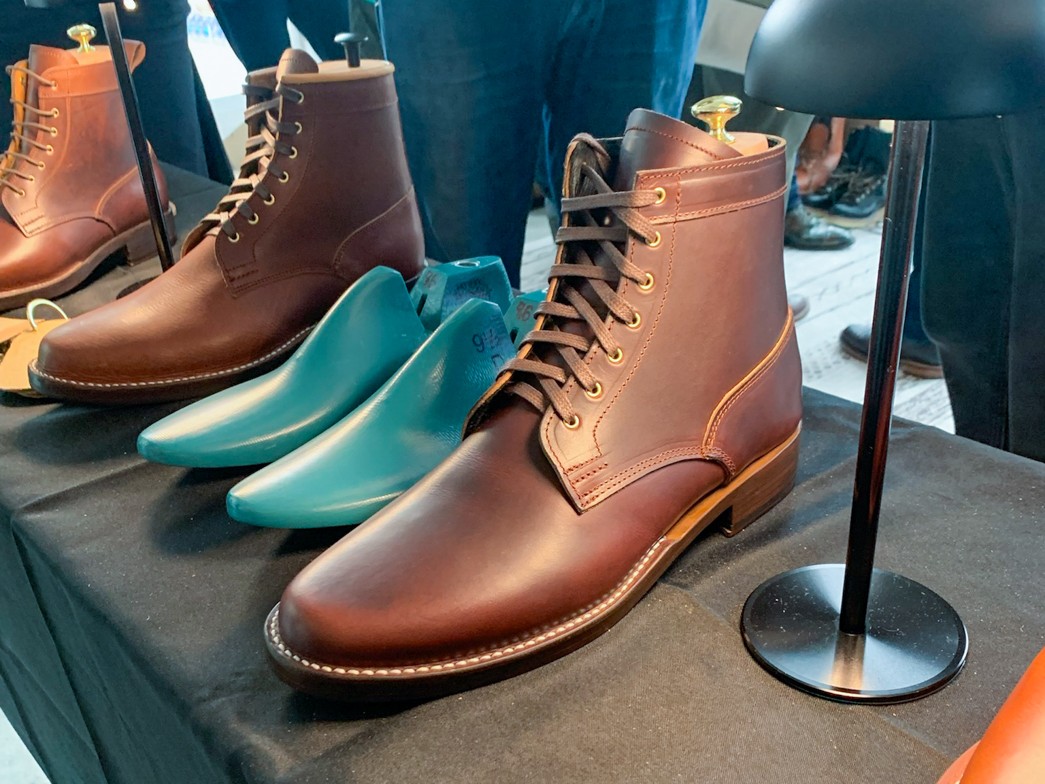
A sample from Nicks’ new Brandle line of dress boots.
It’s admittedly kind of strange to see so many pairs of Nick’s Handmade Boots in pristine condition, with zero signs of wear. It’s not that they’re not beautiful — they are 💅— it’s just that they’re the kind of boots (and shoes) that tend to get worn worn, deployed without favor and pushed to their limits. Or, more simply, the kind of boots that get treated like boots.
And they look so good when they’ve gotten their shit absolutely kicked. I’m sure they look great when they’re all shiny, unexpectedly complimenting a formal ensemble, but they look so at home when they’re thrashed, like they’ve done some work, on some “our upper looks like this so your feet can see sunlight” shit.
Which, again, isn’t to say that they wouldn’t look great as Fancy Boots, because they do. The leather is stunning, that nails construction is clean and the colors are begging to be worn with menswear staples in just about any setting you feel compelled to venture into, but the lack of preciousness is hard to ignore. And the booth was mobbed all day long as a result, with attendees trying on just about every last when they sat down, either copping on site or (presumably) banking that information for a later purchase.
Side note: part of the mobbing had to do with sizing, which was a very cool part of the event. People wear their wrong size all the time when it comes to footwear, but sizing footwear is also hard. The Brannock device is very cool, but it’s not like there’s a rule saying companies have to follow it. Also, those companies have minimal incentive to create sizing consistency or standards between them*, which isn’t the easiest thing to navigate. And then there’s also a prevailing misunderstanding of how shoes are supposed to fit, and thus properly interact with the mechanics of feet wearing them and… you get the gist.
Sizing shoes is hard, especially online. But this kind of event was like a Matrix download of sizing information, allowing attendees to acquire all that information in a single push and store it for later use. So, even in instances when companies weren’t closing a sale, they were still creating potential customers by supplying them with otherwise unattainable information, meaning the value held for both parties. Idk if this is interesting, but I thought it was neat.
(*It might actually be the opposite? If a company can hold your attention long enough that you figure out your size, they now have an advantage over all other companies, assuming their scale is different from others, which means there’s way less friction between you purchasing from them as opposed to another brand in which they might be unsure in regards to sizing. Now, one could argue that if everyone came to an agreement — impossible, won’t bore you with why, just know that this isn’t like making rulers or electrical outlets — it would help everyone, but that would require so many moving parts to sync up without any guarantee of sales. Again, we could get into why, but that’s not why you’re here.)
Meermin
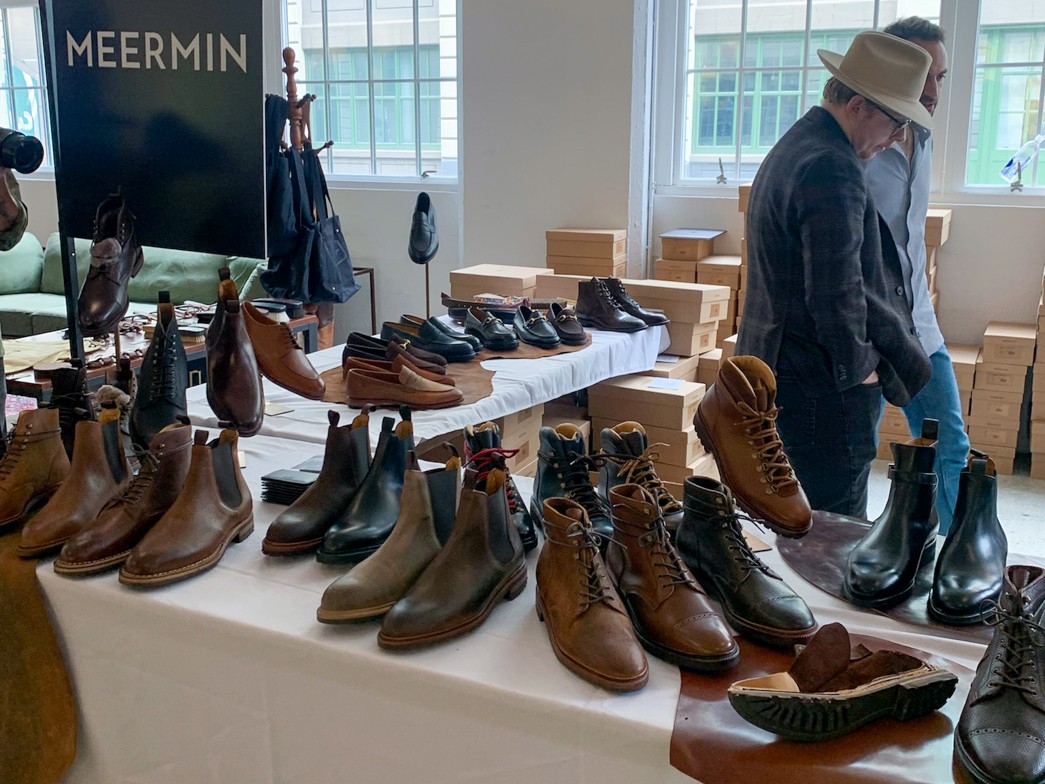
Meermin came to play. They had so many shoes. Just like a full cubicle made out of boxes, it was cool. Meermin, for those that don’t know, is based in Mallorca — which sounds nice — and makes some bomber GYW footwear that retails for far less than those of comparable quality. In other words, great shoes at an incredible value.
And while the entire line was impressive, their loafers hit extremely hard. The toe shape is on the round side, and not in a sloppy or unrefined way but rather in an eternally wearable way or a delightfully unfussy way. They have a horsebit option that clearly knows where it’s drawing from without veering into imitation territory. The classic penny loafer is the kind that probably enters the consciousness due to purpose — event, employment, etc. — but will inevitably become daily drivers.

But let’s talk about loafers for a second… when they had their comeback, they did come back at a speed and ferocity that’s usually powered by trend-extracted fuel. But unlike other things that made an Ali-like return to the ring, loafers just kind of look good? They have the styling versatility of a sneaker, for the most part, and it’s hard to find an historical era in which those wearing them look dumb, which is usually a good litmus test for staying power. (For instance, Sambas have kind of always looked good, despite popularity peaks and valleys. Like Bob Marley wore them and the way he wore them would look good tomorrow, they’re not going anywhere. Big Jorts look funny in reference images, they’re probably doomed.) And if you are looking for some set-em-and-forget-em loafers, ones that you can kinda just pull out whenever for whatever, Meermins are hard to beat.
Unmarked
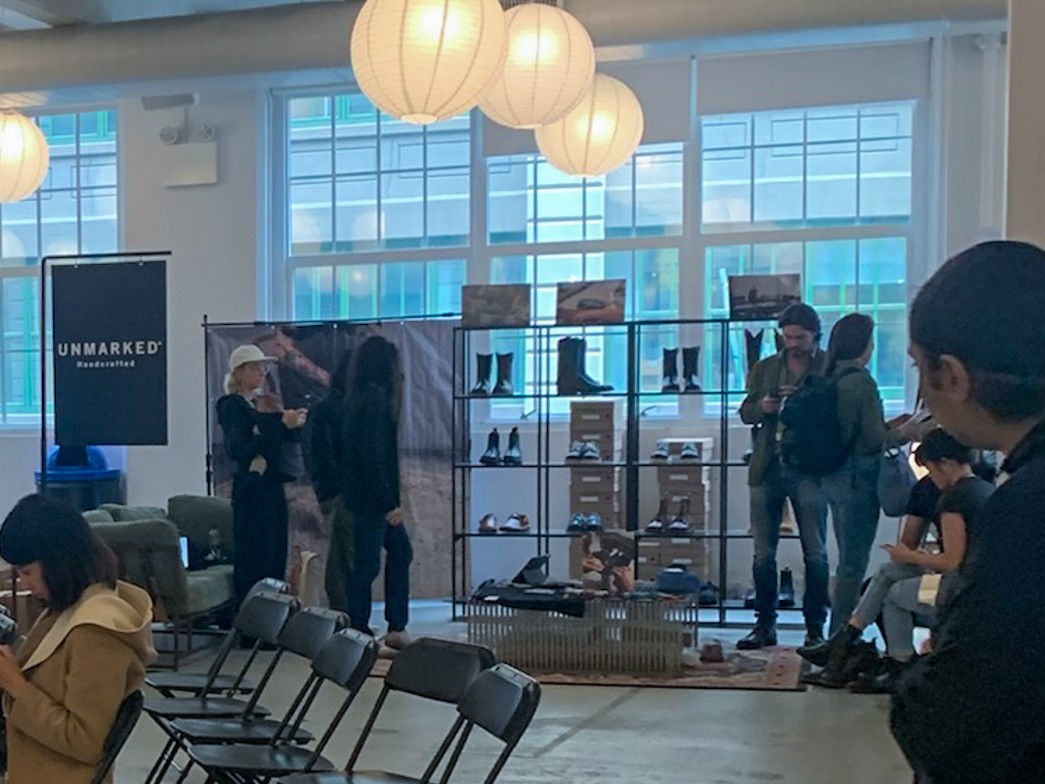
Unmarked was kind of a wildcard at Boot Camp, getting a lil freakier with the offerings than most of the other vendors and doing it pretty damn well. Aside from hitter boots and loafers and the like, they also brought some cheeky cowboy boots, some brogued af service boots, and a few styles with buckle details that are definitely instrumental but were crafted with the care and creativity of something that seems merely ornamental.
They also had these white-laced derbies that made me want to throw some white laces into a few pairs of shoes that I already own, mostly for experimental purposes but also to see if I just want to start running dress shoes with white laces for the sake of getting weird in trying times.
Reject modernity, embrace chaos.
Horween
I have no idea if it makes sense to include Horween in here, but they were in attendance and they brought some big ol cuts of leather, and a lot of companies use Horween leather to make their shoes — and their other things — so it felt of note that they came by. I don’t think you could buy anything*, but you could touch it if that was your thing**.
(*I admit I didn’t ask, but I couldn’t really figure out the purpose of buying a personal quantity of leather aside from hobbyist leatherwork, and if that were the case I don’t even know if Horween is the kind of leather you’d want to work with. And I really do mean “I don’t even know,” like I have no idea. Not a clue. I know people who would know — whatup Dan! Go read his stuff! — but I am not one of them and I didn’t want to bother them because we’re all busy and I didn’t really have a follow up, aside from “Would you buy some at an event like that?,” which didn’t seem additive. **I actually don’t know if you were technically allowed, but I did.)
Perera
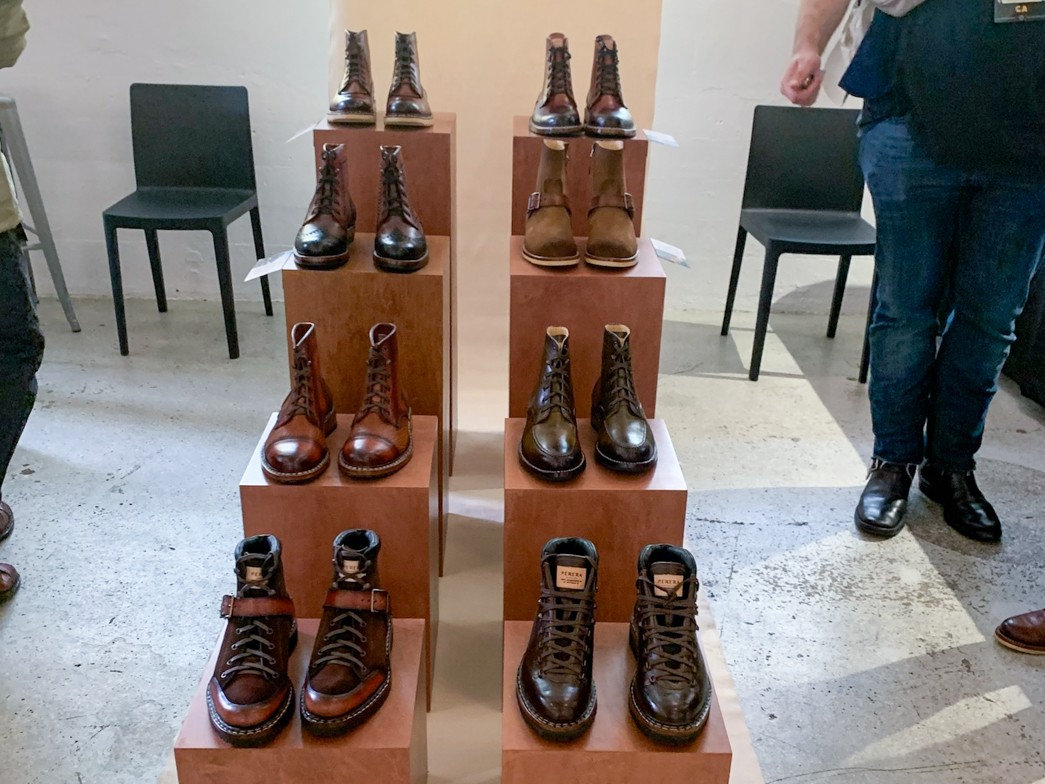
A newer name, Perera came all the way from Antigua, Guatemala, with some eye-catching stuff, all entirely handmade and a bunch of it patina-painted, which is also done by hand.
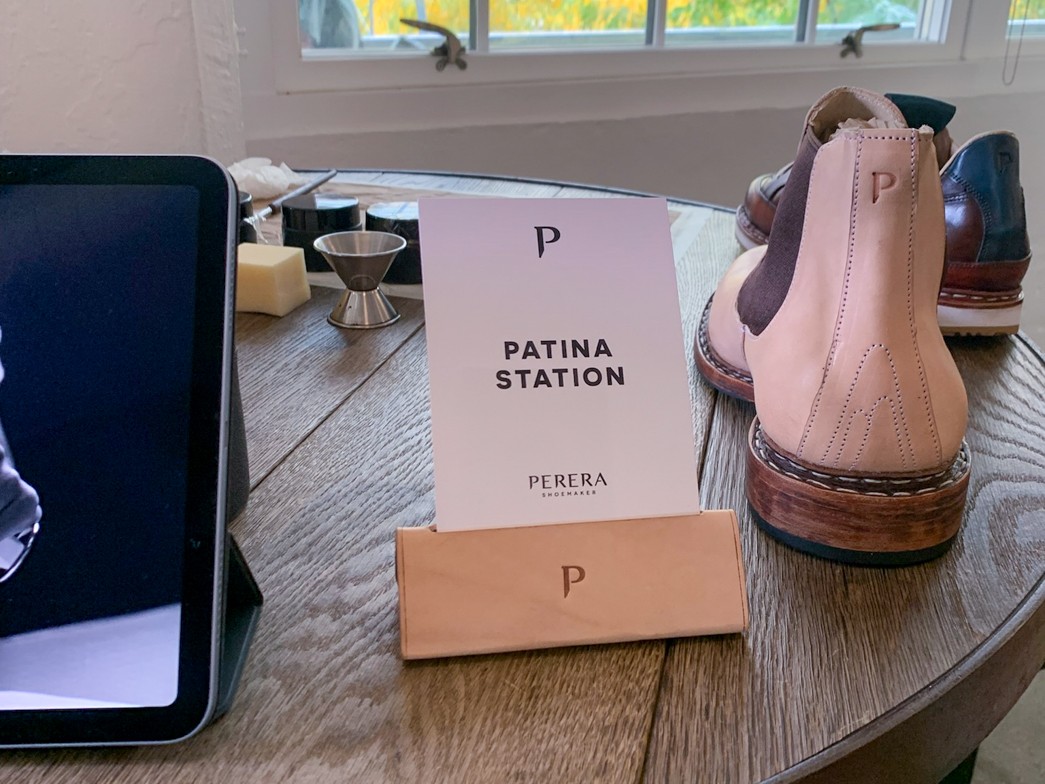
And while a story isn’t worth much if the product doesn’t hit, the product hits in this case, so it’s very cool that the company is working to preserve (and revitalize) the rich history of brilliant craftspeople in the region.
Caswell
Caswell is also a newer name, but the boots they brought through were stunners. Hand-welted and beautifully rendered in Spain, Caswell has a few different entry points into the brand — ready-to-wear, factory samples and made-to-order are the main avenues — allowing those feeling the product to explore with the brand if they’d like.

